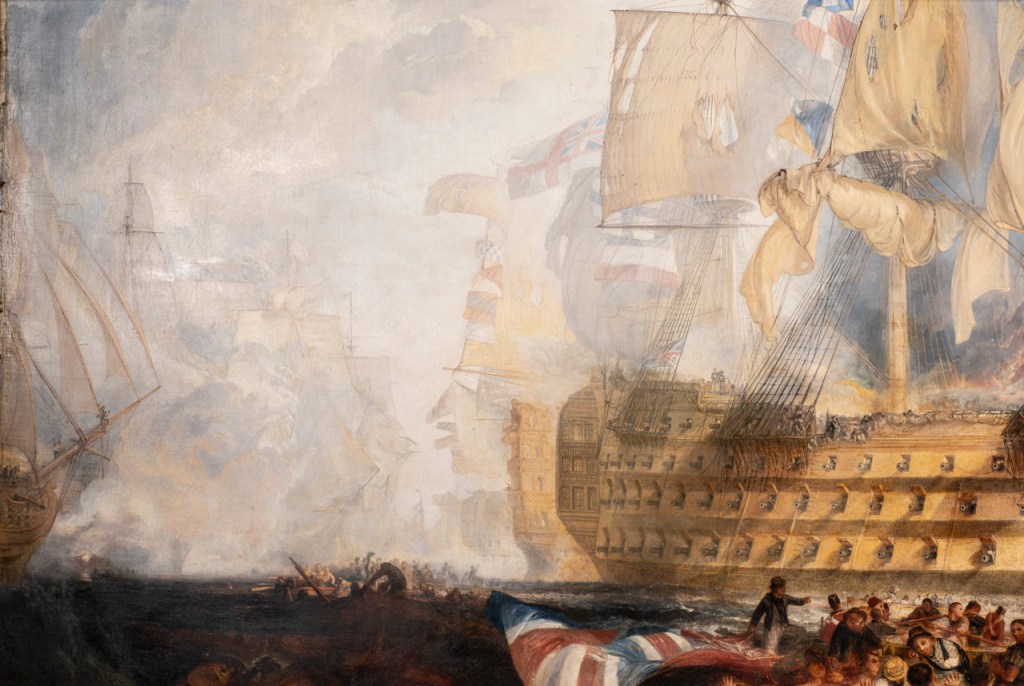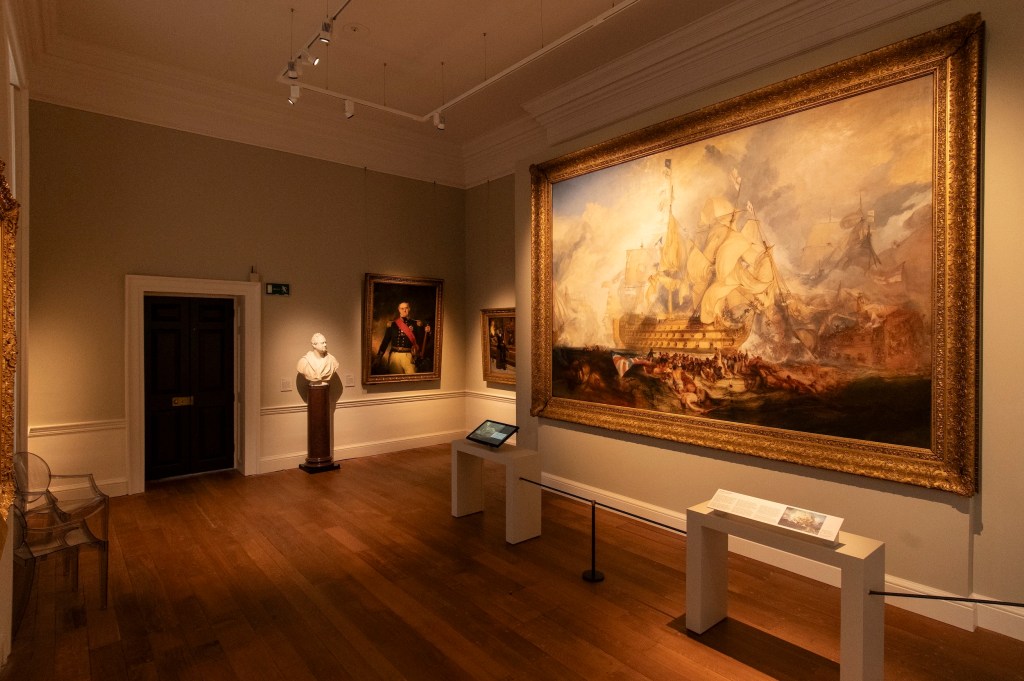On this day 220 years ago, the British Royal Navy, led by Admiral Horatio Nelson, defeated French and Spanish forces at the Battle of Trafalgar — a day that ultimately halted Napoleon Bonaparte’s plans to invade England and secured British naval supremacy for more than a century.
In honor of this anniversary, the Royal Museums Greenwich in London is returning a monumental painting of the battle by J.M.W. Turner to public display today at the National Maritime Museum. Completed in 1824, “The Battle of Trafalgar” is Turner’s only royal commission and his largest work. Measuring nearly 9 feet by 13 feet, it’s so large the museum had to remove a window from the “Queen’s House” and use a crane to bring it in, per a press release shared with Nice News.
Ahead of the historic conflict, which the Museums referred to as “one of the most famous naval battles in British history,” Nelson planned to ambush the Franco-Spanish fleet off Spain’s Cape of Trafalgar during the Napoleonic War. After creating a gap in enemy lines, the admiral’s division split the Franco-Spanish forces and gained the advantage despite being outnumbered — and nearly six hours after the battle began, the British had captured 17 enemy ships. Nelson was shot and died that day, but the Royal Navy emerged victorious with a reputation for excellent naval strategy.
Although Turner’s work initially faced criticism when it was unveiled for its lack of historical accuracy, the museum notes that the artist’s intention was to “capture the human drama of the battle rather than the facts of the action.” Fun tidbit: Turner included subtle signal flags on the ship’s mainmast spelling out the word “duty,” alluding to the famous message that Nelson sent before the battle (“England expects that every man will do his duty”) and some of his dying words (“Thank god I have done my duty”).
Turner had initially finished a painting in 1808 that depicted the same battle. But in 1822, King George IV paid the artist around $670 to make a new piece for St. James’ Palace, where the monarch was born. The work was meant to hang next to “Battle of the Glorious First of June,” a massive painting showcasing a naval engagement that took place during the French Revolutionary Wars.

While Nelson isn’t visible in “The Battle of Trafalgar,” references to the admiral pop up in a couple other ways besides the aforementioned “duty” Easter egg: An embellished version of his flagship is a nod to the power of the British navy, and his falling flag represents his ultimate death. Turner also included a dead sailor in the painting next to the Latin word “ferat” — referring to the motto Palam qui meruit ferat, meaning “Let him who has earned it bear the palm” — to garner respect and empathy for navy seamen.
“Seen as a whole, the painting carries several layers of meaning,” the Museums noted. “It combines a celebration of maritime victory with a tribute to a national hero, an ode to ordinary sailors and a meditation on the horrors of war.”
The painting is now on display next to pieces detailing its journey from St. James’ Palace to the Naval Gallery at Greenwich Hospital, where it was transferred to in 1829 — and it stands as one of the museum’s most treasured masterpieces.
RELATED: Chemical Imaging Reveals “Hidden Mysteries” of 3,000-Year-Old Egyptian Tomb Paintings












